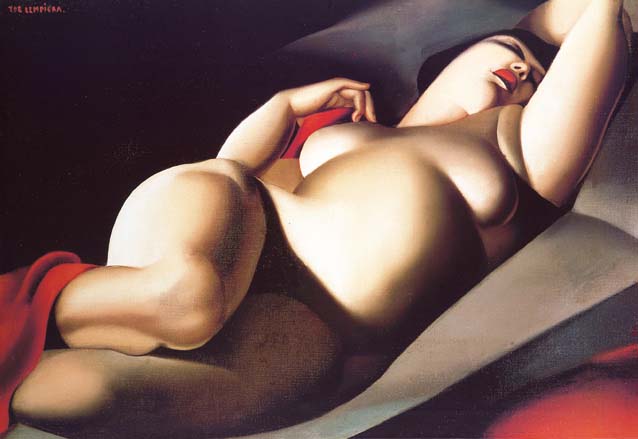Review: The Last Nude, by Ellis Avery
 |
| For the record, the image on the cover is not "Belle Rafaela" but "The Dream", also by Tamara de Lempicka. |
The story takes place in Paris in 1927, between the wars, before the crash of '29, in the Jazz Age - a period of liberal artistic expression and freedom. It's the time of Ernest Hemingway and Thornton Wilder, of Scott and Zelda Fitzgerald, of Gertrude Stein and Alice B. Toklas. One sunny afternoon, painter Tamara de Lempicka selects narrator Rafaela to be her model, her muse and, eventually, her lover. She paints her a number of times over the course of the next several months, but her magnum opus is "Belle Rafaela" which de Lempicka paints two separate times with Rafaela posing...this leads to a bundle of money for Lempicka, fame, and the main drama of the novel.
 |
| "La Belle Rafaela" |
Avery tacks on an extra 55 pages or so at the end ("Part Two") in which we're re-told the story from Tamara's point of view. Tamara is much older now - almost on her death bed - but she recalls for us both her reasons for doing what she did, as well as what we don't know about what happened after the events of "Part One." It seems that this extra bit was added to create depth, another dimension to the story maybe. But what it comes across as is an exculpatory mess of excuses that Tamara has for herself. It only makes the story seem even colder.
Rafaela, on the other hand, is warm and passionate despite the world's treatment of her. She's worth rooting for and her slow maturity from childlike observations to womanly righteousness makes her a valuable narrator. If you don't read it for anything else, read it for her.

Comments
Post a Comment
Any and all feedback is welcome - thanks for taking the time!